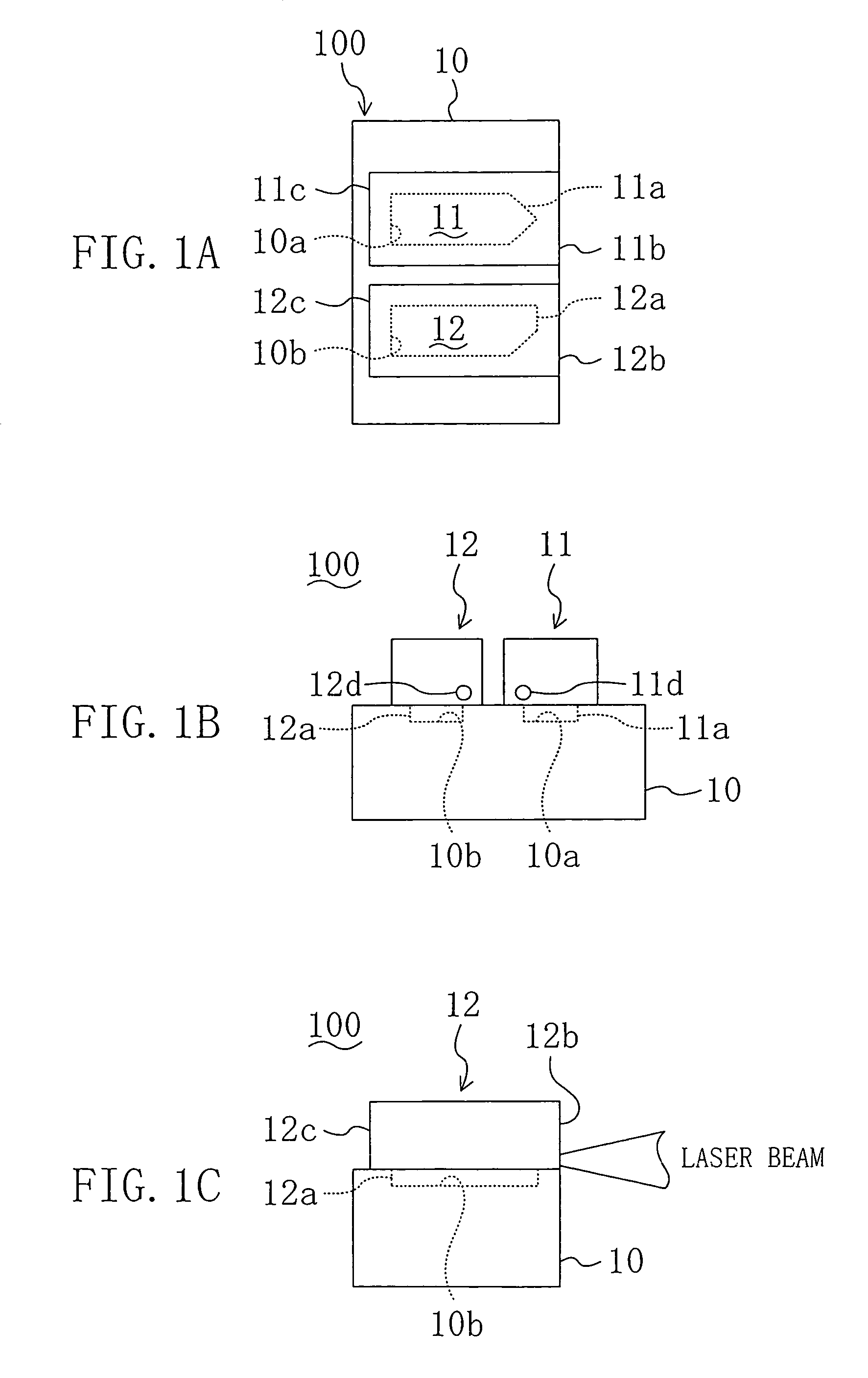Semiconductor device fabrication method
a technology of semiconductor devices and fabrication methods, applied in the direction of light-sensitive devices, electrolytic capacitors, semiconductor lasers, etc., can solve the problems of low yield, significant yield drop, monolithic integration, etc., and achieve the effect of convenient electrode formation
- Summary
- Abstract
- Description
- Claims
- Application Information
AI Technical Summary
Benefits of technology
Problems solved by technology
Method used
Image
Examples
first embodiment
[0053]Hereinafter, a first embodiment of the present invention will be described with reference to the accompanying drawings.
[0054]FIGS. 1A through 1C illustrate a semiconductor laser device in accordance with the first embodiment of the present invention. FIG. 1A shows a plan configuration, FIG. 1B shows a front configuration, and FIG. 1C shows a left-side configuration.
[0055]As shown in FIG. 1A, the semiconductor laser device 100 in accordance with the first embodiment includes a substrate 10, which is made of, e.g., silicon (Si) and which has first and second recessed portions 10a and 10b formed spaced apart from each other in the principal surface of the substrate 10.
[0056]Inserted in the first recessed portion 10a is a protruding portion 11a formed in the lower portion of a first semiconductor laser chip (semiconductor chip) 11 in the form of a function block, which emits, for example, an infrared laser beam. Inserted in the second recessed portion 10b is a protruding portion 1...
second embodiment
[0132]Hereinafter, a second embodiment of the present invention will be described with reference to the accompanying drawings.
[0133]FIGS. 12A through 12C illustrate a semiconductor laser device in accordance with the second embodiment of the present invention. FIG. 12A shows a plan configuration, FIG. 12B shows a front configuration, and FIG. 12C shows a left side configuration. In FIGS. 12A through 12C, the same members as those shown in FIGS. 1A thuough 1C are identified by the same reference numerals and the descriptions thereof will be omitted herein.
[0134]As shown in FIGS. 12A through 12C, a substrate 10B included in the semiconductor laser device 100 according to the second embodiment is characterized in that laser-beam-emitting facets 11b and 12b of semiconductor laser chips 11 and 12 are formed extending ahead of the front facet of the substrate 10B.
[0135]This prevents laser beams emitted by the respective semiconductor laser chips 11 and 12 from being partially lost due to ...
PUM
 Login to View More
Login to View More Abstract
Description
Claims
Application Information
 Login to View More
Login to View More - R&D
- Intellectual Property
- Life Sciences
- Materials
- Tech Scout
- Unparalleled Data Quality
- Higher Quality Content
- 60% Fewer Hallucinations
Browse by: Latest US Patents, China's latest patents, Technical Efficacy Thesaurus, Application Domain, Technology Topic, Popular Technical Reports.
© 2025 PatSnap. All rights reserved.Legal|Privacy policy|Modern Slavery Act Transparency Statement|Sitemap|About US| Contact US: help@patsnap.com



